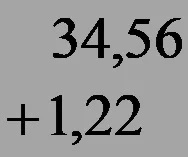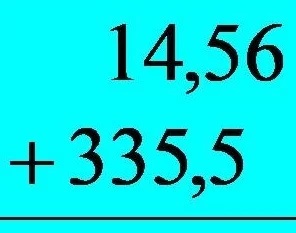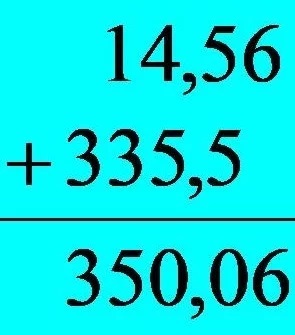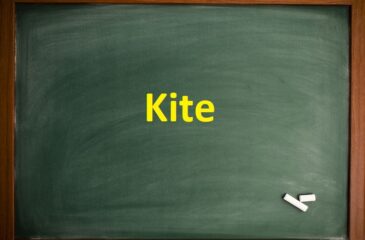How to solve problems with addition and subtraction of decimals? On this page, you can review the rules that we should follow when adding and subtracting decimals. Apart from the rules, every reader can see many solved examples in video format.
Rules for addition and subtraction decimals
To successfully solve problems with addition and subtraction of decimals, we should follow the following rules:
- Arrange the numbers one below the other (whether they are two, three, or more in number) making sure their decimal points are exactly on top of each other! This helps us correctly add or subtract decimal numbers (by place value), e.g. tenth with the tenth, hundredth with hundredth, thousandth with thousandth, etc.
- After the appropriate arrangement, we operate with decimal numbers as if they were whole numbers.
- We write the decimal point in the result right below the decimal points of the individual decimal numbers we are working with.
Examples of incorrect and correct placement
In this section, you can see examples of correct and incorrect settings of the decimal numbers we operate with.
In the first picture below you have a display of incorrectly placed decimal numbers!

As can be seen in the image above, the decimal points of the numbers 34.56 and 1.22 are not placed one below the other. Therefore the setup is not correct!
In the next picture below you have a view of what a correct setting of decimal numbers looks like! Look at the picture!

In the second image, the decimal points are exactly one below the other. This is the correct way to place decimal numbers before addition or subtraction. Once the decimal numbers are correctly placed, we can easily calculate their sum!
We add decimal numbers (The same rules apply when subtracting decimal numbers)!
- In the local value of hundredths, there is only the digit 6 in the first number, so we write 6 in the result.
- We add 5+5 = 10 to the local value of tens, then we write 0 in the result and transfer one to the local value of units.
- Local value units: 4+5+1=10, so we write 0 in the result and transfer one to local value tens.
- We add 1+3+1=5 to the tens place value, then write 5 in the result.
- There is only one digit 3 on the place value hundreds! We do not transfer anything from tens, so we write 3 in the result.
The entire solution is presented in the image below:

Video examples with addition and subtraction of decimals
The video below contains some solved examples with addition and subtraction of decimal numbers*!
*Addition and subtraction are handled in the same way, respecting the same rules mentioned above on this page!
Follow the information and materials that will be published in the future by connecting the www.matematikazasite.com/en profiles on Facebook, and Youtube using the buttons below.
Tags: Addition, Decimals, Examples, Numbers, Subtraction



 Please wait...
Please wait...

